
Lesson 5. Assembling Your Plan
In this lesson, you learn how to further refine your work breakdown structure (WBS), whether your
labor should be part of the WBS, the importance of reintegrating project staff as the project winds
down, and distinctions between the WBS and other planning tools.
The Critical Path for Completing the WBS
Before a project was assigned to you, an authorizing party or committee determined that it needed
to be executed. They allocated resources to the project. At the least, initially this included costs of
your services. They may have also formally or informally made assignments of plant, equipment,
and human resources to the project.
Plain English
Critical path
The longest complete path of a project.
At some point you were summoned. You discussed the desired objective, how long the project will
take, the key events in pursuit of the final objective, and whether or not the project should have
distinct phases. Perhaps a feasibility study was already done. Maybe there were notes and other
documents that enabled you to get a running start as to what you would be required to do. Often,
your initial assignment is to define your own role and present your definition to the authorizing
party or committee.
Once the decision was made to launch the project, and once you were given the formal go-ahead,
laying out your plan, developing the WBS, and presentation to your superiors became the order of
the day, such as that depicted in the chart shown in the figure below.
Laying out the plan.

The basic activities involved to complete the WBS are as follows:
●Identify the events or task and subtasks associated with them. They are paramount to
achieving the desired objective.
●Plot them using an outline, a tree diagram, or combination thereof to determine the most
efficient sequence.
●Estimate the level of effort required (usually in terms of person days) and start and stop
times for each task and subtask.
●Identify supporting resources and when they can be available, how long they are available,
and when and how they must be returned.
●Establish a budget for the entire project, for phases if applicable, and possibly for specific
events or tasks.
●Assign target dates for the completion of events or tasks known as milestones.
●Establish a roster of deliverables, many of which are presented in accordance with
achieving or are analogous to milestones.
●Obtain approval of your plan from the authorizing party. See the chart in the figure below.

Laying out your plan.
The Chicken or the Egg?
Preparation of your work breakdown structure (WBS) and the actual commencement of project
activities is a chicken-versus-egg issue. For example, many experts advise that you first identify
staffing resources and then proceed with the work breakdown structure. Following that approach,
the opportunity to allocate staff as necessary comes first, followed closely by budget allocations.
CAUTION
Until you plot exactly what needs to be done, you can't allocate staff hours.
Some experts advise creating the WBS independently of staff allocations. First, you identify what
needs to be done, and then you assemble the requisite staff resources based on the plan that
you've devised. I recommend the latter, because it is a more pure approach to laying out and
assembling your plan—you identify needs first and then allocate appropriate staff resources.

When does it make sense to start with the staff in mind?
●When they are all full-time
●When the project is relatively short
●When the project is labor intensive or requires a lot of expensive equipment
●When you are relatively certain that you have all the skills and experiences you need within
the existing allocated staff
Is Planning Itself a Task?
Another chicken-versus-egg issue to consider is whether or not planning itself represents a task to
be included on the WBS. Experts argue that especially for large and involved projects, planning
can represent a variety of tasks or events or even subtasks. Planning can even be synonymous
with a project phase. For example, depending on what you're trying to achieve, the outcome of
Phase I might be to develop a plan which will be crucial to the execution of Phase II.
Still, some critics argue that while planning consumes time and budgetary resources, it is not
appropriate to incorporate it into the WBS. They say that the WBS and any other type of planning
document merely represent the outcomes of the planning process. A plan is only considered
completed when the project actually begins. Thus, the work of the project itself is separate from
the plan that enabled the work to commence.
On this particular chicken-versus-egg issue, you decide whether you want to include the planning
of the project as a task or event in itself or simply have it represent a prelude activity for the actual
work of the project.
CAUTION
You can't skirt chicken-versus-egg issues, as they could make a significant impact
on your budget and overall project plans if you don't consider them.
What About Your Hours?
Should your activities and contributions to the project as project manager be listed in the work
breakdown structure? Some experts say no. They argue that project management represents pure
management—it is there from the beginning; it will be there at the end, and
●It is ongoing.

●It isn't a task.
●There are no milestones or deliverables attached to it.
●There are no events or activities that are dependent upon project management per se.
Those who argue that project management should be plotted in the WBS point out that although
all the above may be true, the act of managing a project is a vital project input and
●It involves labor.
●It consumes resources.
●It helps to achieve outcomes.
●It is clearly a valuable resource.
●It is part of the overall budget in the form of the project manager's salary.
For these reasons, I advocate that the project management function of a project be included in the
work breakdown structure.
Internal Resources Versus External Resources
As arduous as it may seem, constructing a WBS is relatively easy when all of the resources are
internal, such as your staff, equipment, and other component supporting project efforts. What
about when you have to rely on external resources, such as outside vendors, consultants, part-
time or supplemental staff, rented or leased facilities, and rented or leased equipment? Then the
job becomes more involved.
CAUTION
External project resources are more difficult to budget, schedule, and incorporate
at precisely the right time.
It can also be argued that monitoring the work of outside vendors, consultants or supplemental
staff is more challenging than working with internal staff. However, external human resources who
bill on an hourly or daily basis have a strong incentive to perform admirably, on time, every time.
Helping Your Staff When It's Over
In perfecting your WBS, have you accounted for the reintegration of your project staff back into


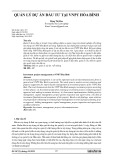
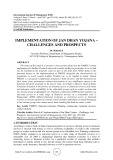

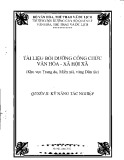

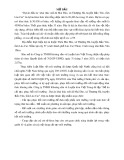



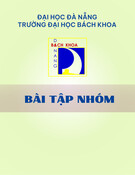







![20 câu hỏi Quản lý dự án phần mềm có đáp án [mới nhất]](https://cdn.tailieu.vn/images/document/thumbnail/2025/20251003/hieu2004haha@gmail.com/135x160/78791759734259.jpg)
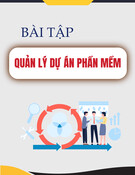

![Tài liệu Quản lý dự án: Kiến thức nền tảng toàn diện [chuẩn SEO]](https://cdn.tailieu.vn/images/document/thumbnail/2025/20250910/kimphuong1001/135x160/92631757496585.jpg)



